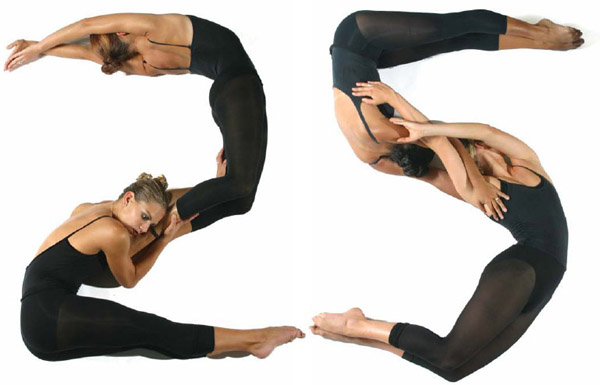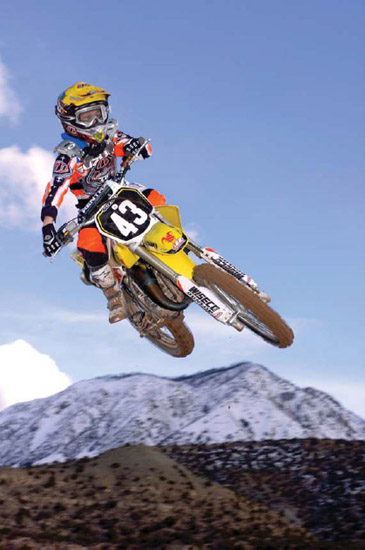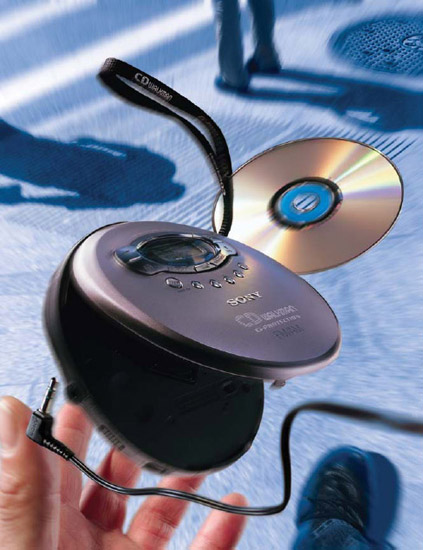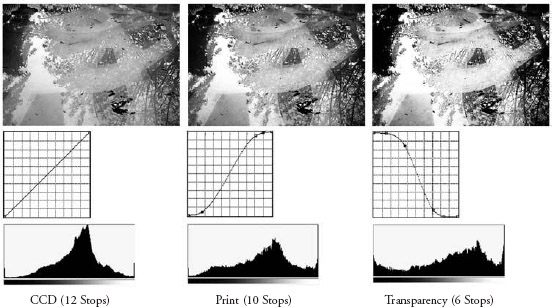
Craig Duggan © Hedrich Blessing 2000. “Panorama from One Wacker Drive” by Craig Duggan. This panorama was captured by a large-format viewcamera, which allowed the use of a wide-angle lens with a vertical format to extend the angle of view toinclude most of the high buildings near the camera location and the river and street level. Because a very wide-angle lens and perspective control were used, film was required in this case. If a digital scan back had beenused, image aberrations would have been caused by the scanning, movement of light, and environmentalevents. Also, with the wide angle of view, exposure falloff would have occurred at the extremes of the imageframe. The ten exposures seen in the lower image were used as hybrid media to create the 360° panorama.
Chapter 10 Overview
A hybrid approach that combines film and digital capture opens up new imaging potentials that are not possible with digital capture alone. This chapter discusses the benefits and shortcomings of using film capture with digital output and provides a direct comparison of both digital capture and hybrid paths to a digital image.
Choosing Hybrid Digital Photography
Digital capture is becoming the dominant form of photography but is not the “end all.” The existence of hybrid imaging admits that digital imaging has not achieved superiority in all areas of photographic capture. With this in mind, rejection of previously learned skills or abandonment of acquired equipment is counterproductive; however, as we rush to the new, we need to realize that our goal is in making the best choice.
As we transition from silver-halide-based photography to an electronic-enabled future, let us step back to look at the convergence of these processes. Today, neither digital capture nor hybrid digital photography is superior in all situations; in the imaging world, each technique maintains its usefulness for particular applications and offers certain advantages within these applications.
Sometimes hybrid imaging is simply the most practical choice. From an economics point of view, it can be argued that the lower costs offered by hybrid imaging make it the superior approach; however, at the 35-mm size, hybrid imaging does not always offer a significant cost advantage over digital imaging. So, why choose hybrid imaging? Using film as the capture medium and then converting to digital images provides the photographer with ways to overcome some of the shortcomings of digital capture, and film-based capture also has some built-in advantages that are not obvious when viewing the simplest model of digital imaging alone.
Sensor Size Versus Film
A major point with regard to digital imaging for commercial/professional photography is a comparison of the resolution of digitally captured images to that of film. Doing the math, we find that color film has more than 10 million dye locations per square inch; therefore, a 35-mm negative has more than 15 million locations with color information within the negative image. A 6-cm-square image has over 50 million color locations, and one that is 4 × 5 has over 200 million color locations. If each color location represents one of the three primary colors used to create a digital image, then the equivalent file size of a 35-mm film image would be greater than 15 megabytes. Today, many cameras have sensors with well over 5 million pixel sites. With interpolation, a 5-million-pixel (3-megabyte/pixel) sensor will generate a 15-megabyte file in 24-bit color, which, it can be argued, is equal to a 35-mm frame.
Let us take another look at this line of reasoning, though. With regard to the issue of interpolation of color, the colors were not actually recorded at each site of the sensor; instead, only one-third of the color light was recorded. (Although the Foveon® X3 chip does not have this problem, it has fewer pixel locations.) This logic leads to the conclusion that the real value of a digital image lies not in its color file size but in its pixel count. Some cameras do have area arrays that are greater than 14 megapixels and offer similar detail-gathering abilities compared to film, but most professional 35-mm single-lens reflex (SLR) cameras are in the range of 6 to 11 megapixels. Camera backs are available with area arrays of over 22 megapixels, and some scanning backs can gather more than 100 million locations over long exposures in each of the three scanned colors. Depending on the digital camera, the relation to film for sensors is at or below film’s detail gathering ability.

Birdman—Paris, France. © brentwinebrenner.com.
The second issue that arises when comparing digital capture to film is the fill factor, which is the percentage of the sensor’s surface covered by active receivers. Because of the way sensors are designed, a sizeable amount of the surface is dedicated to the electronics required to make the sensor function and move the image off once the image is captured. These areas contribute no information for image formation. Today, the fill factor for many professional sensors is about 60%. While great improvements have been made in increasing the fill factor, this issue is still important when evaluating the detail-gathering abilities of a sensor. Detail from areas not covered by active areas of the sensor must be ignored, combined, or interpolated.
Another issue is the sampling rate, which simply reflects the amount of detail that is captured. As noted earlier in the book, it can be said that a minimum of 2 pixels are required to record a detail that is 1 pixel wide.
When we consider these three issues when comparing pixels to grains of film, it becomes clear that such a comparison is not a simple one. With the exception of some of the newer high-pixel-count sensors available in 35-mm SLR-style cameras, film still provides better detail; therefore, the same quality image is not necessarily produced when the number of pixel sites on a sensor is equal to the number of grains on film. A better approach is to compare resolution, and film has better resolution compared to most sensors.
Though not dealing directly with sampling, lens dynamics affect overall resolution and depth of focus. Several factors—such as the effects of modulation transfer, sensor site size, and optic requirements of the micro-lenses used in the sensor—limit the minimum f-stop for acceptable output.
Color Interpolation Versus Scanned Color
Color is important in most imaging applications today, and herein lies another problem for digital imaging. With the exception of the Foveon® X3 chip design, sensors use a matrix of filters to capture the color of the image. This matrix is designed such that each pixel has a filter over it. The filters are arranged in alternating red/green or blue/green rows, columns, or diagonals, so half of the sites are filtered green, onequarter red, and one-quarter blue.
With the matrix of filters the image color is not captured in its hue at each pixel (the sensor site), but as a value of one of the three primary colors. The rest of the color is interpolated by using the color information of adjacent sites. This means that the color accuracy is dependent on sampling combined with the filtration pattern. Artifacts, such as color moiré patterns, can result from inaccuracies inherent to some digital capture systems.
Because most scanners use either tricolor imaging or trilinear sensors, the color information is recorded as combined hues at each site; thus, the color makeup of the image scanned is similar to that of the film or print used. While scanning backs use this type of capture, long exposure times are required to produce the images.

Ballet Cover. © Christopher Gardner.
One of the biggest advantages of digital capture is responsible for a deficiency in the technique. Silver halide requires more energy to capture an exposure than does a photodiode, which leads to a differential in the spectral energies effective for exposure of film. Digital capture devices are far more sensitive to infrared energy than film. At the same time, sensors are noticeably inferior to film in the blue and violet spectra, with no sensitivity in ultraviolet spectral areas. This deficiency in acquiring images at the blue end of the spectrum leads to added noise and poor image gathering within this spectral region. Film, however, is more sensitive in these short-wavelength regions.
Electronics
The largest drawback of digital capture is operating systems problems. Today’s digital cameras and backs are complex computers that have the same requirements as other computers. The issues of power and fragility override most other issues. The problem of maintaining a power supply is familiar to anyone who has used a digital camera for an extended time. The electronic requirements of these cameras mean that batteries or power packs must be changed regularly. Particularly in adverse weather conditions (hot or cold), the battery power or operating system can be compromised. Further, certain types of digital capture systems require a computer connection, which only compounds problems. This issue cannot be avoided by the using cameras with removable media, as doing so does not remove the dependency on microcircuitry that is both fragile and affected by adverse environmental conditions.
One nuisance that makes using digital capture incompatible with some imaging applications is noise. Noise happens when stray electronic information affects the sensor sites. This happens naturally with most electronic systems but can be exacerbated by heat. As the length of exposure increases, there is more opportunity for noise to develop. This is a problem because noise is more apparent in dark areas; thus, the long exposures necessary for evening and night photography become problematic.
Storage
For a long time, two issues facing digital capture have been storing and archiving the captured images. Major improvements have been made in removable media, but these storage media are still part of the problem. Returning to the issue of image size, we want the in-camera media to hold our images at their highest resolution. As noted earlier, when an image is modified, in any way, data are lost; thus, the photographer will want to use uncompressed files onboard. If the capture system uses 12 or 16 bits per channel (36- or 48-bit color), the image files can get quite large. For example, a 6-megapixel sensor image captured at 24 bits creates an 18-megabyte TIFF file, while a 48-bit image creates a 36-megabyte TIFF file. Even with a 256-megabyte media card, only seven images can be saved at highest resolution and 16-bit-per-channel color. A related but often overlooked issue is how storage media contribute to the deficiency of digital capture with respect to the write speed of the media. For large files, how quickly they can be moved to the media becomes important.
Beyond how much can be saved on the removable media is the issue of archiving. It would be nice to say that committing an image to a CD or DVD would solve that problem. While these media are far superior to removable media with regard to permanence, the usefulness of the media in the future will be determined by technologies that will replace the CD and DVD. The permanence of CDs and DVDs has not been clearly researched, but with the normal development cycles in electronics it is highly likely that these two storage media will be replaced in the not too distant future. On the other hand, film images offer a long, useful life with careful storage and can be scanned when needed. Also, film can be evaluated by eye, while digitally captured images must be viewed via electronic equipment.
Another important consideration is how cameras reduce file size with onboard compression. Though such compression is avoidable on most professional cameras, some professionals do use high-pixel-count amateur cameras for which onboard compression is an issue. Regardless of whether or not the compression is used, the array processor affects the color rendition.
Hybrid Digital Imaging
Our discussion of hybrid digital imaging would not be complete without addressing the various problems associated with the technique. The three major drawbacks to hybrid digital imaging can be found in the areas of dynamic range, color gamut, and workflow.
Dynamic Range
The most serious disadvantage of hybrid imaging is the short dynamic range of the film process, particularly for transparency films. While the human perceptual system presents the viewer with a range of 1 million to 1 light acquiring ratio or 20 stops of dynamic range, color transparency film records only a 64: 1 range, or about 6 stops. Negative materials (both black and white and color) have a 1000: 1 range of about 10 stops for normal processing and printing. While negative materials actually capture a greater dynamic range than just stated, the reason why the dynamic range is shortened with negative films is the way the tones reproduce with normal processes on silver-halide-based papers. Because the film captures much more detail from a scene than can be printed under normal processes, the printing process and procedures are the limiting factors.

Motorcycle. © Wildcat Studios, Stacy Smith.
A system is only as good as its most limiting part. In the case of negative to print, the restricting dynamic range is that of the printing paper. For negative to digital scan, the limiting factor is usually the scanner’s ability. While scanned color negatives offer an expanded dynamic range when compared to silver halide printing, other problems are generated by the color masking layer in color negative film. Because of the way color masking is generated in film, it reduces the overall contrast while adding color to the negative, thus restricting the useable dynamic range. Also, the abilities of a scanner are limited, if not totally eliminated, by the way the film captures light, with compression of highlights and shadow details.
With careful exacting processing and printing, black and white materials can extend this range, but such images do not fit well into the commercial realm and require both exceptional processing and printing. One of the finest Zone System photographers says that he can capture and achieve 16 to 17 stops of dynamic range through to the print. This range is achieved by exposing for massive underdevelopment and printing that includes intensification, dodging, and burning to achieve detail in the shadows and highlights. Digital capture gives 14 to 16 stops of dynamic range, or up to 65,000: 1.
The abilities of various media to deal with dynamic range become apparent in the highlights and shadows as well as in the contrast when accurately exposed, as can be seen in the curve form for each capture method. The rounded portions of the curves show this compression, and the steepness shows contrast. While film will have a solid black and a clear white, the amount of detail in both highlights and shadows is greater in the digitally captured image than in the normally printed image from film. The contrast in the digital image looks flatter because in film the highlights and to some extent shadow details are compressed, while digital capture does not compress throughout its dynamic range. This compression is most noticeable in transparency film because the process compresses both highlights and shadows. In negative to print processing, there is compression of detail in the film and paper in shadow detail; with the paper, at the highlight detail areas of the image.

CD Player. © Ralph Masullo.
Color Gamut
Humans can see about 10 to 13 million colors. Digital imaging with 24-bit color defines approximately 17 million colors. While the colors generated in digital imaging are finer definitions and segmentation of the total colors available, because of the way the color is captured through filters, these are not truly different colors but rather different areas of the generalized color space. This is also true of film. Because of the higher contrast of the gathering abilities of film, less color space is defined and thus fewer colors available in film than the human eye can perceive.
Workflow
For many photographers, the time that separates the act of taking an image and its finished state is very important. Hybrid imaging involves two additional steps compared to digital capture. Depending on how they are handled, these extra steps may or may not be a bother to the photographer since service bureaus can process, scan, and color manage images simultaneously. If the photographer produces the scans, then quality issues arise that revolve around color management and cleanliness of the scans. Color management and dealing with any color bias from the film require constant monitoring and control. Also, clean-room technology is required to avoid time-consuming retouching. Even with digital correction software, scanning can be problematic.

Figure 10-1 This image comparison examines the captured dynamic range of a charge-coupled device (CCD) (12 stops), negative material with normal processing and printing (10 stops), and transparency material (6 stops). Curves show how the capture media react to exposure. The shapes of the curves indicate compression of light values captured in both highlights and shadows. The steepness of the curves reflects the relative contrast of the images. (These curves have been drawn to provide a comparison and are not necessarily accurate.) These histograms show the distribution of tonal output in relationship to the information captured during exposure and output. The higher the area of the histogram, the more tone is represented at this output level. Note the higher response to highlights and shadows for film, with compression in the transparency film being evident in large amounts at each end of the histogram. The clipping, or loss of detail—indicated by the increases in pixel counts in the highlights of the prints from a negative and transparency film and in the lower digital numbers for transparency film—shows restriction of the dynamic range.
Comparison
At some point we need to take the deficits and obvious advantages of these techniques into account to compare hybrid digital photography and digital capture. It is no longer an issue of whether or not digital imaging will become a mainstay of commercial/professional imaging but rather which avenues are appropriate for creating these digital images. Comparisons are best split into technology and process issues. From a technology viewpoint, the first concern is resolution, and resolution is best achieved by hybrid digital in all areas that are not 35-mm based or which have certain requirements such as high speed with high resolution. Dynamic range is better with digital capture when compared to normal processing and printing. Color is not particularly relevant to this comparison, as the digital capture and film utilize different color spaces, with only the bias of the photographer determining preference. Filmbased systems are more upgradeable. Finally, costs in today’s market favor a hybrid approach. From a purely technological standpoint, then, it can be argued that the hybrid approach is preferable to digital imaging alone.
From a process viewpoint, however, the point is easily made for digital capture. With digital capture, processing is far less bother. Hybrid imaging requires physical processing and scanning before arriving at a digital image. For this reason, workflow is simpler for digital capture. Also favoring digital capture are environmental concerns dealing with pollutants and health. The only aspect of processing that favors a hybrid approach is its flexibility. With regard to color, digital capture is preferable for color print processing, while a hybrid approach is preferred for black-and-white processing. Overall, from a process standpoint, digital capture would seem to be the better alternative.

Belize Picture Window. © Kathryn Watts-Martinez.
Another critical area to consider is that of applications. Different applications require different approaches, and some are not well suited to digital capture. When these particular approaches are called for, this single issue overrides all the others. Large-format, perspective-controlled with depth of focus, long or low-light imaging, and multiple exposures are all instances when a hybrid approach to digital photography is an advantage.
Summary
- Hybrid digital photography uses film to capture the image, and the final digital files are acquired by scanning negatives, transparencies, or prints.
- The sampling rate of sensors, when compared to the ability of film to capture detail, is inferior when using medium- or large-format films.
- There are differences in the spectral sensitivity of film and digital capture. Film is better at capturing short wavelengths, and digital is better for longer wavelengths.
- Several issues arise with regard to the use of digital capture because of its electronic nature, particularly issues of power needs and noise.
- Storage of images remains a concern for those using digital capture. Film serves the purposes of both capture and storage media.
- Digital capture has a larger dynamic range than transparency film and the normal negative to print process. This means that hybrid digital photography is limited because film is not well suited to long ranges of light.
- Workflow is simpler with digital capture than when using film to acquire digital images.
- When comparing hybrid digital photography to digital capture, the critical issue is application, and several applications are better suited to hybrid digital photography
